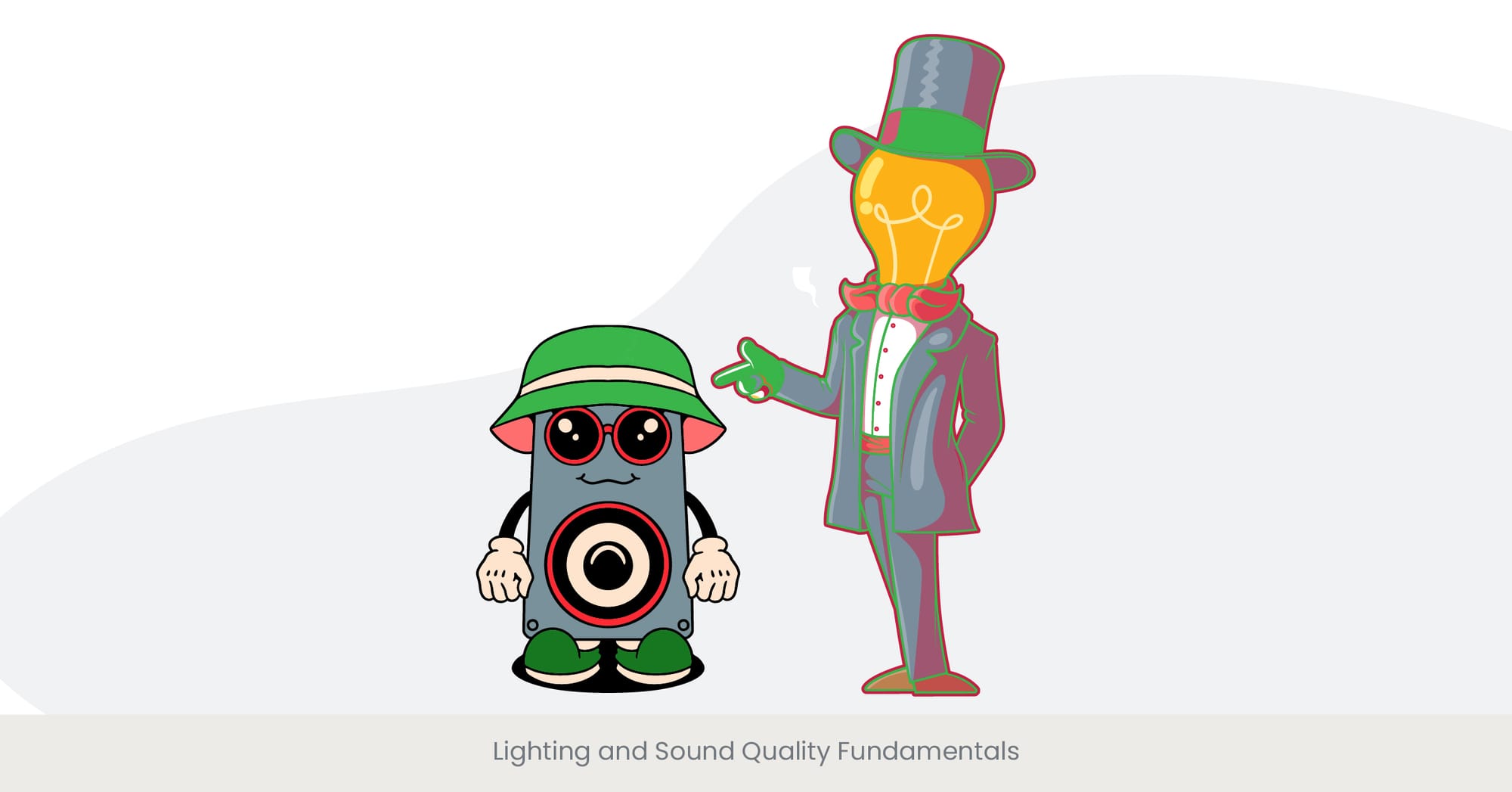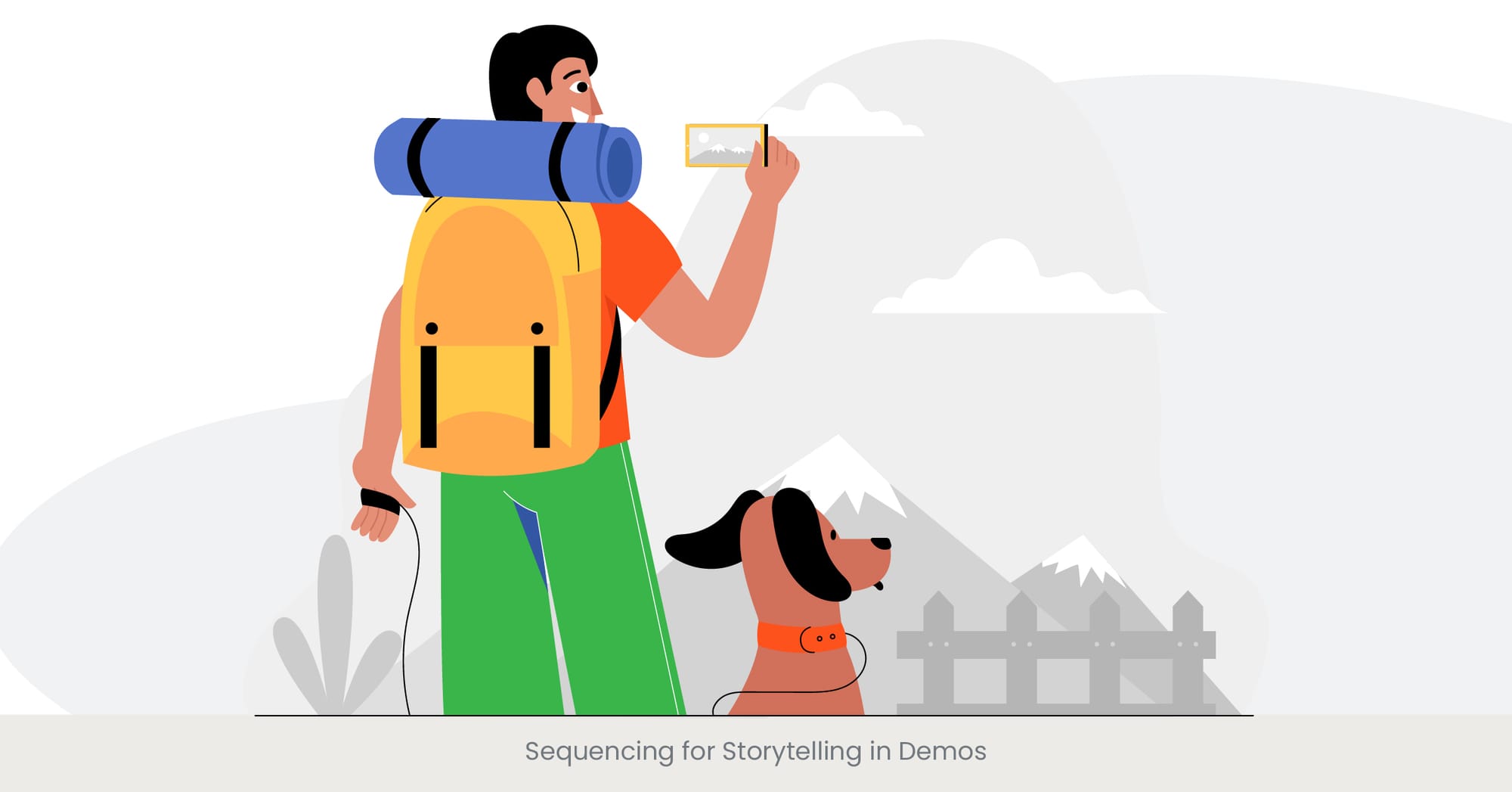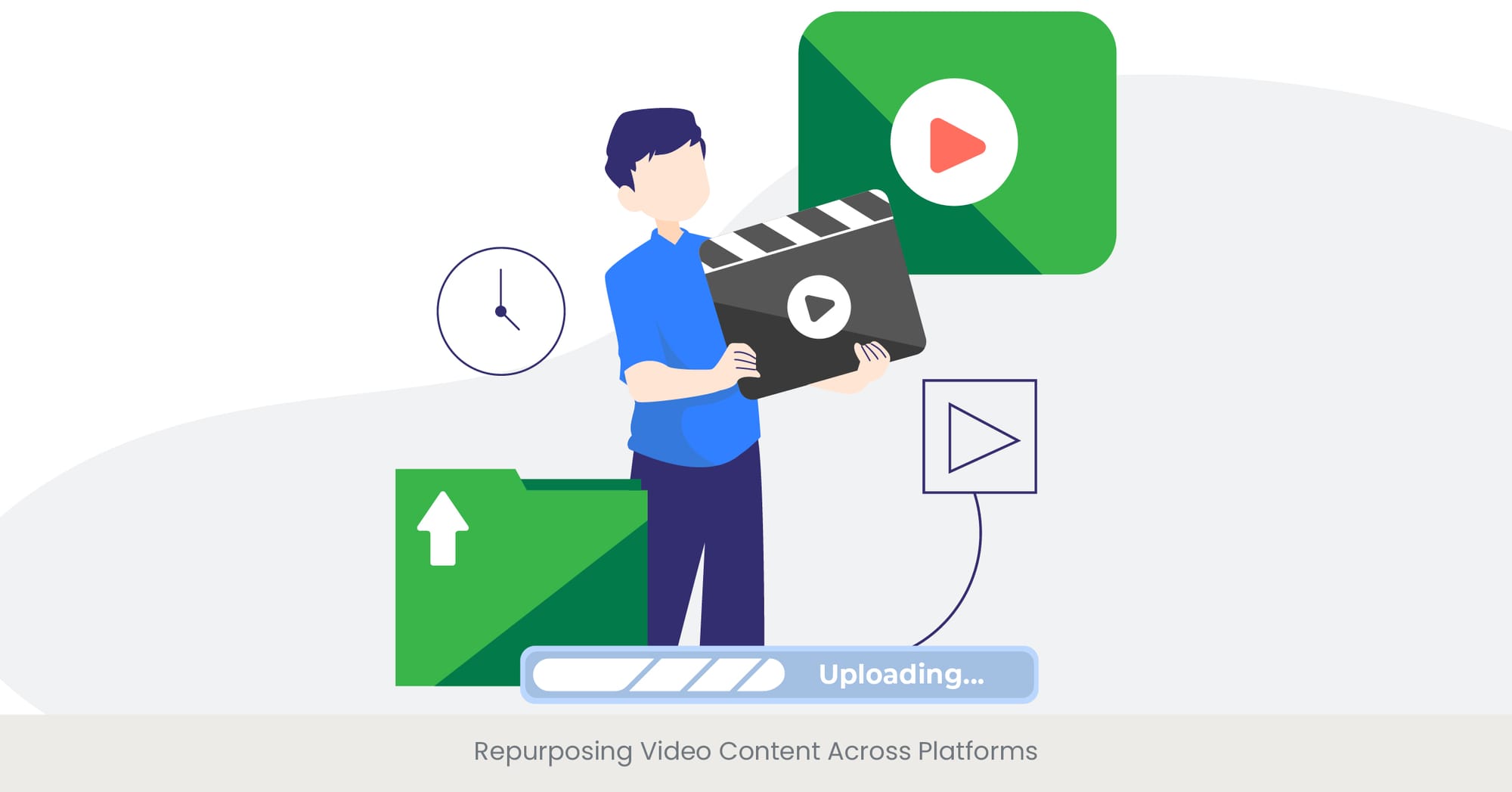
Scriptwriting for Clarity and Impact
Introduction: Crafting the Core of Your Product Demo
Scriptwriting for clarity and impact is the cornerstone of any effective product presentation. A well-structured script ensures that the message about the product is delivered succinctly and engagingly, essential for maintaining viewer attention and conveying the unique value proposition of your product. This phase of the video production email marketing process sets the foundation for how your product is perceived and can significantly influence the decision-making process of potential customers, making it a key component of presentation coaching for sales.
Background: The Art of Writing a Compelling Script
The art of scriptwriting for product presentation flow design goes beyond mere words on a page. It involves a deep understanding of the product's features, benefits, and the target audience. The script must succinctly distill the essential information about the product, highlight its key features, and articulate how it solves a problem or improves the user's life. Historically, successful product demos often employ a compelling product narrative in a problem-solution format, which efficiently showcases the product's necessity and efficiency.
Real-World Applications: Successful Script Strategies
For instance, the launch of new tech gadgets often involves a script that begins by addressing common frustrations experienced by users before introducing the product as a solution. This strategy is particularly valuable for public speaking tips for product presentations, where presenters must address pain points while maintaining audience engagement. A notable example can be seen in effective product presentations used by major tech companies, where the script carefully outlines user pain points followed by product benefits that directly address these issues. These presentations are not just informative—they are compelling product narratives that engage the audience, making the product demo memorable and convincing.
Validation and Statistics: The Impact of a Well-Written Script
Research and case studies from marketing analysts highlight the effectiveness of a well-written script. According to various studies, effective product presentations with clear, concise scripts can enhance understanding of the product by up to 70%. Furthermore, scripts that effectively use emotional triggers and a strong call to action can increase conversion rates significantly. Engaging a professional scriptwriter or investing time in honing this skill as part of presentation coaching for sales can yield substantial returns in terms of video effectiveness and sales conversions.
Lighting and Sound Quality Fundamentals

Introduction: Setting the Stage for Your Product Demo
Lighting and sound quality are pivotal elements that can dramatically affect the viewer's perception of your effective product presentation video. Proper lighting ensures that the product and the presenter are clearly visible and appealing, while good sound quality is essential for clear communication. These technical fundamentals not only enhance the visual and auditory appeal of your demo but also contribute to the professionalism and credibility of the product presentation flow design.
Background: Understanding the Basics of Lighting and Sound
Lighting for video production should aim to eliminate harsh shadows and highlight the product’s best features. Key light, fill light, and back light, commonly known as three-point lighting, are typically used to achieve this effect. Similarly, sound quality hinges on the use of appropriate microphones, environment control, and post-production editing. Clear audio without echoes or background noise makes the public speaking tips for product presentations more engaging and easier to follow, ensuring that your message is not lost.
Real-World Applications: Techniques in Action
Consider a product demo for a new kitchen gadget. Effective lighting would highlight the sleek design of the product, while clear sound would capture all details explained by the presenter, from the soft click of a button to the whir of the gadget at work. For example, cooking shows often utilize overhead and frontal lighting setups to ensure the food looks appetizing, which is similar to how product presentation flow design might enhance a product’s physical appeal.
Validation and Statistics: The Influence of High-Quality Production
Studies show that videos with professional-grade lighting and sound can increase viewer retention rates by up to 50%. A survey by a leading video marketing strategy firm revealed that videos with better production quality resulted in higher engagement metrics. This emphasizes how attention to these elements in effective product presentations can boost video effectiveness.
Choosing the Right Platform for Your Audience

Introduction: Matching Platform to Purpose and People
Choosing the right platform for your audience is crucial in video marketing strategy, particularly for effective product presentations. The chosen platform can greatly influence how your content is received and interacted with, impacting the overall success of your marketing efforts.
Background: Platform Diversity and Targeting
Different platforms cater to various demographics and content consumption patterns. For instance, YouTube is excellent for in-depth explainer videos due to its extensive reach and viewership's preference for detailed content, ideal for public speaking tips for product presentations. In contrast, Instagram or TikTok might be better suited for shorter, more visually engaging product presentation flow design aimed at a younger audience.
Real-World Applications: Strategic Platform Use
A successful example of this is a company that launched a compelling product narrative on both YouTube and Facebook but tailored the content’s length and presentation style to fit each platform's audience.
Validation and Statistics: Efficacy of Platform Choice
Research indicates that effective product presentations tailored to the platform on which they are shared see a 40% higher engagement rate compared to non-optimized ones. This data demonstrates how strategic platform selection can enhance the reach of presentation coaching for sales.
Thumbnail and Title Optimization for Click-Through Rate

Introduction: The First Impression Counts
The thumbnail and title of your video are the first points of contact with your audience and are critical in determining whether they click to watch your product presentation flow design video.
Background: The Science Behind Thumbnails and Titles
Thumbnails should be visually appealing and relevant to the content, while titles need to be compelling and concise, incorporating relevant keywords for SEO benefits. The best thumbnails often include a hint of curiosity, while the titles should clearly articulate the video's value proposition, key components of effective product presentations.
Real-World Applications: Thumbnails and Titles in Action
An effective example of this strategy can be seen in tech gadget reviews, where thumbnails often show the gadget in an intriguing setup or include a person’s reaction to entice curiosity. Titles like “5 Amazing Features of [Product Name] You Can’t Miss!” combine both informational and emotional appeal, perfect for compelling product narratives.
Validation and Statistics: The Impact of Optimized Thumbnails and Titles
Statistics show that videos with optimized thumbnails and titles can see a CTR increase of up to 30%. A study by a leading video marketing company found that videos featuring custom thumbnails with facial closeups and emotionally expressive visuals, combined with actionable titles, performed significantly better in terms of viewer engagement and CTR compared to those without. This highlights the importance of investing time in crafting eye-catching thumbnails and well-thought-out titles.
Using Annotations and Call-to-Actions

Introduction: Driving Viewer Engagement and Action
When crafting an effective product presentation, it’s important to engage your audience through visual aids like annotations and clear call-to-actions (CTAs). Whether you're presenting live or in a video format, these elements help drive action. While presentation coaching for sales often highlights the importance of strong CTAs, annotations can enhance the overall product presentation flow design, ensuring key details aren't missed.
Background: The Mechanics of Annotations and CTAs
Annotations are crucial in guiding the viewer throughout the presentation. They support compelling product narratives by emphasizing features or offering additional resources. CTAs, on the other hand, direct the audience toward the next step, an important part of creating an effective product presentation. Whether your goal is to educate or sell, combining these tactics with public speaking tips for product presentations can greatly increase viewer engagement.
Real-World Applications: Effective Use of Annotations and CTAs
For instance, e-commerce companies use annotations to highlight product features, adding CTAs like “Buy now” or “Subscribe for more updates.” The synergy between these elements forms a seamless product presentation flow design that leads viewers toward specific actions.
Validation and Statistics: Quantifying the Impact
Studies show that using CTAs effectively can increase conversion rates by up to 80%. Incorporating them within the first 30 seconds of your effective product presentation also increases viewer retention, demonstrating how a good flow and well-placed CTAs make a difference.
Sequencing for Storytelling in Demos

Introduction: Crafting a Compelling Narrative
A strong product presentation flow design is essential for captivating your audience and driving home the value of your product. In both live presentations and video formats, well-thought-out sequencing supports compelling product narratives, which is a key focus of presentation coaching for sales.
Background: The Art of Sequencing
Sequencing helps build anticipation, starting with a problem and moving toward your product as the solution. Creating an effective product presentation isn’t just about showing features—it’s about crafting a story. Using public speaking tips for product presentations can further amplify this effect, ensuring that your audience follows your narrative from beginning to end.
Real-World Applications: Sequencing in Action
For example, a smartphone demo could start by addressing common user frustrations, and then strategically build towards how your product resolves them, ensuring that each section of the video supports the overall product presentation flow design. This method keeps the narrative cohesive and engaging.
Validation and Statistics: The Effectiveness of Good Sequencing
Good sequencing can increase product understanding by 50%. Sales conversion rates also rise when effective product presentations use a clear narrative structure—something frequently emphasized in presentation coaching for sales.
Behind-the-Scenes Footage to Enhance Authenticity

Introduction: Humanizing Your Brand
Adding behind-the-scenes footage to your effective product presentation helps build trust by offering transparency and authenticity. This approach can be particularly beneficial when integrated into a broader compelling product narrative, a concept emphasized in presentation coaching for sales.
Background: The Value of Behind-the-Scenes Content
Behind-the-scenes content highlights the human element of your product creation process, giving audiences a better understanding of your commitment to quality and innovation. This strategy fits seamlessly into an effective product presentation by showcasing your company’s values.
Real-World Applications: BTS in Successful Campaigns
Many companies use behind-the-scenes footage to emphasize the meticulous attention to detail in their product creation. These insights build compelling product narratives, offering a transparent look that resonates with audiences.
Validation and Statistics: Impact on Consumer Perception
Research indicates that including behind-the-scenes content can increase consumer trust by up to 30%, making it an effective way to enhance your product presentation flow design.
Take your marketing efforts to the next level with our expert tips and tutorials designed to help you implement the right analytics and performance tracking systems for your videos.
Leveraging Customer Testimonials

Introduction: The Power of Customer Voice
Incorporating customer testimonials into your effective product presentation can significantly boost credibility. When placed strategically within your presentation’s sequence, testimonials become part of a broader compelling product narrative that builds trust and drives conversions.
Background: Why Testimonials Work
Testimonials offer social proof, providing a real-world perspective on your product’s benefits. This tactic aligns with many public speaking tips for product presentations, helping to humanize the product and validate its effectiveness.
Real-World Applications: Testimonials in Action
For example, a software company might use testimonials in a product demo video that features users from various industries explaining how the software has streamlined their operations and increased productivity. Such testimonials not only validate the product's claims but also demonstrate its versatility across different business contexts. This approach can broaden the product’s appeal and reassure potential users of its efficacy in their specific environment.
Validation and Statistics: The Impact of Testimonials
Need more inspiration?
Check out our latest case studies that showcase how companies used performance tracking to optimize their product presentation flow design and increase conversions
Analytics and Performance Tracking

Introduction: Measuring Success in Video Marketing
Analytics and performance tracking are essential components of a successful product presentation video strategy. In today's competitive landscape, understanding how viewers interact with your videos can provide insights into what makes a compelling product narrative and what needs improvement. For instance, tracking viewer engagement and retention helps optimize the product presentation flow design to ensure viewers remain engaged throughout the entire demo.
Background: The Importance of Metrics
Key performance indicators (KPIs) for video marketing include view count, engagement rate (likes, comments, shares), watch time, and click-through rate. These metrics not only measure viewership but also show how effective your public speaking tips for product presentation are when delivered on screen. Advanced analytics can even track conversion metrics, such as how many viewers turned into leads or customers after watching a demo. For sales teams, this data provides clear evidence of what aspects of the product presentation flow design need improvement, enabling more effective presentation coaching for sales teams.
Looking for actionable steps to improve your compelling product narrative? Explore our YouTube tutorials to learn more about video marketing strategies, and see real-world examples in action
Watch Now on YouTube
Real-World Applications: Utilizing Analytics for Better Results
A practical example of using analytics effectively is a company that noticed a significant drop in viewership halfway through its product demo videos. By analyzing the data, they identified that lengthy introductions were causing viewer drop-off. As a result, they adjusted their video strategy to shorten the intro segment and highlight key product features earlier in the video, which led to a significant increase in engagement and watch time.
Validation and Statistics: The Power of Data
Research shows that companies that actively use video analytics see a 40% higher conversion rate than those that don’t. A marketing study revealed that videos optimized based on viewer behavior analytics can increase retention rates by up to 50%. This underscores the importance of not just creating content but also continuously monitoring and optimizing it based on performance data to maximize impact.
Want to enhance your product demo videos and track their performance effectively? Reach out to us and see how our tailored video marketing strategies can work for your business
Repurposing Video Content Across Platforms

Introduction: Maximizing Content Utility
Repurposing video content across multiple platforms is a strategic way to get more mileage out of your product demo. By tailoring your effective product presentation for various channels, you not only maximize visibility but also optimize audience engagement on different platforms. For example, a polished demo video with a strong compelling product narrative for YouTube could be repackaged into short clips for social media or detailed explainers for LinkedIn.
Background: The Strategy Behind Content Repurposing
The strategy behind repurposing content is about more than just reusing material. It’s about understanding what works best on each platform and adapting your video to fit. For instance, the same effective product presentation can be shortened into highlights for Instagram, emphasizing different aspects of the product for LinkedIn, and more dynamic, engaging clips for Facebook Live. Whether you're focusing on presentation coaching for sales teams or reaching out to potential customers, tailoring the product presentation flow design for each platform ensures maximum impact.
Real-World Applications: Effective Content Adaptation
An example of effective content adaptation comes from a tech company that launched a new gadget with a comprehensive product presentation flow design video. They edited the demo into shorter, more engaging segments for Instagram, created longer in-depth explainer videos for Facebook Live, and shared technical discussions on LinkedIn. This multi-platform strategy not only broadened their audience reach but also helped create an impactful and compelling product narrative for various user groups.
Validation and Statistics: The Benefits of Diversified Content
Repurposing content can increase reach by up to 300%. Brands that diversified their video content across platforms saw a 35% higher engagement rate. Furthermore, companies utilizing public speaking tips for product presentations reported better viewer retention when content was adapted for multiple platforms. The stats back it up: a well-structured effective product presentation with a strong compelling product narrative can increase engagement and generate leads across channels, proving that multi-platform strategies are crucial for long-term success.
Frequently Asked Questions

How do you introduce a product presentation?
Introduce a product presentation by clearly stating the product name, its main benefits, and what the viewer can expect to learn from the presentation. Begin a slide deck with a compelling hook that addresses a common problem or need that your product solves.
How to make a presentation for selling products?
To make an effective sales presentation, focus on the unique value proposition of your own product or service. Use engaging visuals and concise content that highlights the product's benefits over competitors. Incorporate testimonials and data-driven results to build credibility and trust.
How do you organize a product presentation?
Organize a product presentation by structuring it into clear segments: introduction, problem statement, solution (your product), benefits, and a strong call to action. Ensure each part flows logically into the next to keep the audience engaged.
How do you create a product launch presentation?
Create a product launch presentation by showcasing the innovation and benefits of your new product. Include high-quality visuals, clear statistics, and engaging stories or scenarios that illustrate the product’s impact. End with a clear call to action, such as encouraging pre-orders or visits to a website for more information.
How to do an effective product demo?
An effective product demo should demonstrate how the product works in real-time, emphasizing its functionality and benefits. Use clear, concise language and ensure the demo addresses anticipated questions or concerns. Highlighting key features that differentiate your product from others in the market can also be very effective.
How do you structure a good demo?
A good demo is structured by firstly outlining the problem it solves, demonstrating the product in action, and detailing its features and benefits. Keep the presentation focused and paced to maintain viewer interest. Use examples or scenarios in which the product would be used to add relevance.
What does a good product demo look like?
A good product demo is visually engaging, informative, and concise. It should clearly demonstrate the product's use and effectiveness, showcase its benefits, and answer potential questions from the audience. The demo should also include a clear call to action at the end.
What not to do in a product demo?
Avoid overcomplicating the demo with too much technical jargon, focusing too narrowly on features without explaining benefits, or failing to address the product's relevance to the viewer. Don’t let the presentation run too long, and avoid poor video or audio quality which can detract from the product's appeal.
How to create a product presentation video?
To create a product presentation video, start with a detailed script that outlines each segment of the presentation. Use high-quality video and audio to enhance the viewer's experience with own video. Include engaging visuals and animations that help illustrate the product’s features and benefits.
How do you make a product video?
Making a product video involves planning the content, writing a script, filming with good lighting and sound, and editing the footage to highlight the product’s best features. Incorporate customer testimonials and clear call-to-actions to make sales presentations encourage viewer engagement and action.



%20(1).jpg)
%20(1).jpg)
